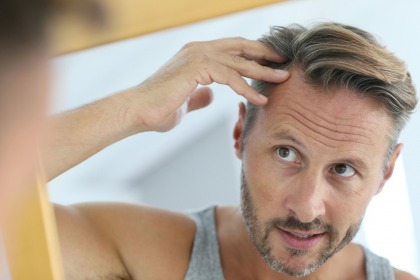Afro-textured hair presents unique challenges when it comes to hair restoration, particularly in areas like the crown, where hair loss patterns tend to be more stubborn and diffuse. Understanding the specialized approach required for these hair types is essential for achieving natural-looking, long-lasting results.
Crown Hair Transplant in Dubai has gained attention for its customized strategies tailored specifically to Afro hair, thanks to advancements in techniques and increased awareness about textured hair needs.
How Afro Hair Differs in Transplant Procedures
Afro hair is biologically different from other hair types in a few distinct ways, which significantly impact the transplantation process. The tightly coiled curl pattern of Afro hair doesn’t just exist above the scalp—it continues below the skin surface. This makes hair follicles curved or C-shaped under the dermis, unlike straight follicles in Caucasian or Asian hair types. These unique characteristics require surgeons to use specific tools and techniques to ensure successful extraction and implantation.
Key Challenges in Afro Hair Transplants:
| Challenge | Description |
|---|---|
| Follicle Curvature | Roots are curved, requiring precision during extraction |
| Scalp Density | Often lower donor hair density in Afro hair types |
| Curl Pattern Matching | Implanted hair must align with the curl pattern for a natural appearance |
| Scar Risk | Higher keloid formation risk in some individuals of African descent |
These factors emphasize the need for expertise in performing transplants on Afro-textured hair, particularly in tricky zones like the crown.
What Is the Crown and Why Is It Hard to Treat?
The crown or vertex area of the scalp lies at the upper back of the head. It’s one of the most challenging areas for hair transplantation because hair loss here is often circular and progressive. In Afro hair types, this region can become sparse in a spiral pattern, making coverage and density a cosmetic concern.
Characteristics of the Crown Area:
| Feature | Implication for Transplantation |
|---|---|
| Spiral Growth Pattern | Requires precise angling of implanted follicles |
| Diffuse Thinning | Makes it harder to achieve high density with fewer grafts |
| Low Blood Circulation | Slower healing and sometimes slower growth post-transplant |
How Crown Hair Transplant Works for Afro Hair Types
When approaching crown transplants for Afro hair, techniques are carefully chosen based on individual needs. The two main methods used are FUE (Follicular Unit Extraction) and FUT (Follicular Unit Transplantation). FUE is often preferred due to its minimally invasive nature and lower scarring risk.
Step-by-Step Procedure:
- Consultation and Scalp Analysis
A trichologist or surgeon evaluates the scalp for follicle health, curl type, donor area strength, and crown pattern. - Donor Hair Extraction
Using a punch tool (often between 0.9mm and 1.1mm), the surgeon extracts hair follicles carefully to avoid transecting the curved root. - Follicle Sorting and Preservation
Extracted follicles are sorted based on graft strength and curl orientation, then stored in a cold solution. - Recipient Site Creation
Tiny incisions are made in the crown area, taking into account the natural swirl and density pattern of Afro hair. - Implantation
Grafts are implanted one by one, following the crown’s spiral design to create a seamless and natural result.
Crown Hair Transplant in Dubai: Specialized Care for Afro Hair
Clinics offering Crown Hair Transplant have adopted advanced techniques, including the use of customized punches and robotics, to accommodate textured hair. The city has become a hub for medical tourism thanks to its combination of expert care and patient-focused facilities.
Why Choose Dubai for Afro Hair Transplants?
| Benefit | Explanation |
|---|---|
| Experienced Surgeons | Many have experience with diverse hair types, including Afro hair |
| Multicultural Expertise | Clinics are accustomed to treating patients from African and Caribbean backgrounds |
| Cutting-Edge Technology | Use of sapphire blades, DHI (Direct Hair Implantation), and robotics |
| Luxury Recovery Facilities | Comfortable post-operative care designed for international patients |
Expected Results and Timeline
Hair transplant outcomes for Afro hair, particularly in the crown, depend on proper post-op care, density strategy, and curl alignment. Because of the spiral nature of the crown and slower growth cycles, visible results may take longer than frontal hairline restorations.
General Timeline:
| Time Frame | Progress Description |
|---|---|
| 1-2 Weeks Post-Op | Scabbing and shedding of transplanted hair begins |
| 1-3 Months | Dormant phase; new growth not visible yet |
| 4-6 Months | Initial curl emergence; hair starts to thicken |
| 9-12 Months | Final density and curl definition become evident |
Curl Pattern Preservation: A Key to Natural Results
One of the top goals of a successful crown hair transplant for Afro hair is to retain the natural curl pattern. Surgeons must align follicle angles and directions accurately during implantation, especially because Afro curls emerge from the scalp at a distinct angle.
Techniques to Preserve Curl Pattern:
| Technique | Role in Curl Preservation |
|---|---|
| Microscope Sorting | Ensures consistent curl direction during implantation |
| Angled Blade Incisions | Mimic natural spiral of crown region |
| DHI (Direct Hair Implantation) | Allows direct placement with precise curl orientation |
This level of detail ensures the regrown hair blends seamlessly with surrounding areas and maintains its unique texture.
Common Concerns for Afro Hair Transplants in the Crown
Afro-textured individuals often have concerns around scarring, pain, and graft survival. These are valid, and careful surgeon selection can help mitigate these issues.
Frequently Asked Concerns:
| Concern | Solution or Reassurance |
|---|---|
| Will I develop keloid scars? | Use of FUE over FUT reduces this risk significantly |
| Is the procedure painful? | Local anesthesia ensures the process is virtually pain-free |
| Will the curls be the same? | Yes, if implantation follows proper curl alignment techniques |
| What if donor area is sparse? | Body hair transplant or beard hair may be used in rare cases |
Post-Operative Care Tips for Afro Hair Transplant
After the transplant, patients with Afro hair must be cautious during healing to avoid dislodging grafts or triggering inflammation.
Essential Aftercare Steps:
| Tip | Benefit |
|---|---|
| Avoid Washing Hair for 72 Hours | Protects grafts from dislodging |
| Use Sulfate-Free, Gentle Shampoo | Prevents scalp irritation and dryness |
| Sleep with Head Elevated | Reduces swelling in the crown area |
| Avoid Styling Tools for 3 Weeks | Prevents follicle damage and tension |
| Moisturize Scalp After 2 Weeks | Keeps scalp hydrated and supports healing |
Is Crown Hair Transplant Permanent for Afro Hair?
Yes, the results are typically permanent because the donor hair is genetically resistant to hair loss. However, the success depends heavily on proper technique and aftercare.
| Feature | Permanence Factor |
|---|---|
| Donor Hair Resistance | Hair taken from the back/sides is usually DHT-resistant |
| Curl Memory Retention | Implanted hair retains its original characteristics |
| Healthy Lifestyle | Supports long-term hair health and prevents shedding |
Final Thoughts
Crown hair transplantation for Afro hair types is both an art and a science. It requires a deep understanding of hair curl patterns, skin physiology, and crown region anatomy. Crown Hair Transplant offers patients with Afro-textured hair a chance to restore their natural look with precision and safety.































